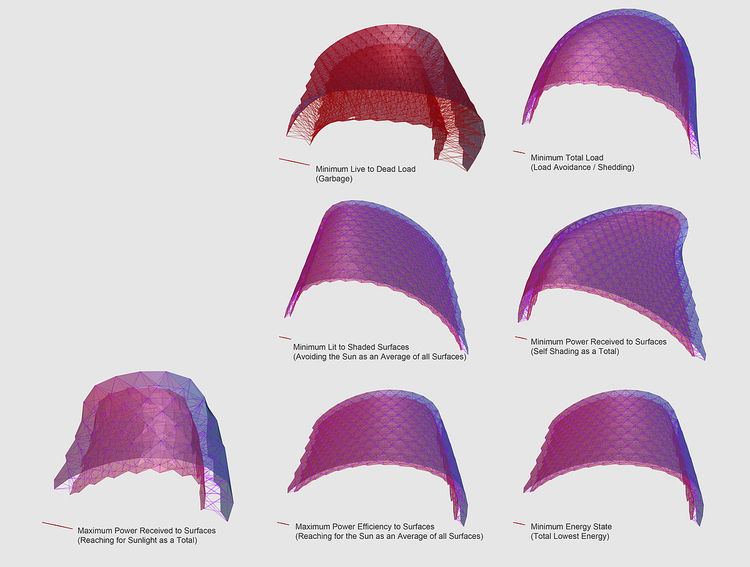 | ||
Shape optimization is part of the field of optimal control theory. The typical problem is to find the shape which is optimal in that it minimizes a certain cost functional while satisfying given constraints. In many cases, the functional being solved depends on the solution of a given partial differential equation defined on the variable domain.
Contents
- Definition
- Techniques
- Keeping track of the shape
- Iterative methods using shape gradients
- Geometry parametrization
- References
Topology optimization is, in addition, concerned with the number of connected components/boundaries belonging to the domain. Such methods are needed since typically shape optimization methods work in a subset of allowable shapes which have fixed topological properties, such as having a fixed number of holes in them. Topological optimization techniques can then help work around the limitations of pure shape optimization.
Definition
Mathematically, shape optimization can be posed as the problem of finding a bounded set
possibly subject to a constraint of the form
Usually we are interested in sets
Shape optimization is an infinite-dimensional optimization problem. Furthermore, the space of allowable shapes over which the optimization is performed does not admit a vector space structure, making application of traditional optimization methods more difficult.
Techniques
Shape optimization problems are usually solved numerically, by using iterative methods. That is, one starts with an initial guess for a shape, and then gradually evolves it, until it morphs into the optimal shape.
Keeping track of the shape
To solve a shape optimization problem, one needs to find a way to represent a shape in the computer memory, and follow its evolution. Several approaches are usually used.
One approach is to follow the boundary of the shape. For that, one can sample the shape boundary in a relatively dense and uniform manner, that is, to consider enough points to get a sufficiently accurate outline of the shape. Then, one can evolve the shape by gradually moving the boundary points. This is called the Lagrangian approach.
Another approach is to consider a function defined on a rectangular box around the shape, which is positive inside of the shape, zero on the boundary of the shape, and negative outside of the shape. One can then evolve this function instead of the shape itself. One can consider a rectangular grid on the box and sample the function at the grid points. As the shape evolves, the grid points do not change; only the function values at the grid points change. This approach, of using a fixed grid, is called the Eulerian approach. The idea of using a function to represent the shape is at the basis of the level set method.
A third approach is to think of the shape evolution as of a flow problem. That is, one can imagine that the shape is made of a plastic material gradually deforming such that any point inside or on the boundary of the shape can be always traced back to a point of the original shape in a one-to-one fashion. Mathematically, if
The idea is again that shapes are difficult entities to be dealt with directly, so manipulate them by means of a function.
Iterative methods using shape gradients
Consider a smooth velocity field
and denote
Then the Gâteaux or shape derivative of
if this limit exists. If in addition the derivative is linear with respect to
where
Typically, gradient descent is preferred, even if requires a large number of iterations, because, it can be hard to compute the second-order derivative (that is, the Hessian) of the objective functional
If the shape optimization problem has constraints, that is, the functional
Geometry parametrization
Shape optimization can be faced using standard optimization methods if a parametrization of the geometry is defined. Such parametrization is very important in CAE field where goal functions are usually complex functions evaluated using numerical models (CFD, FEA,...). A convenient approach, suitable for a wide class of problems, consists in the parametrization of the CAD model coupled with a full automation of all the process required for function evaluation (meshing, solving and result processing). Mesh morphing is a valid choice for complex problems that resolves typical issues associated with re-meshing such as discontinuities in the computed objective and constraint functions . In this case the parametrization is defined after the meshing stage acting directly on the numerical model used for calculation that is changed using mesh updating methods. There are several algorithms available for mesh morphing (deforming volumes, pseudosolids, radial basis functions). The selection of the parametrization approach depends mainly on the size of the problem: the CAD approach is preferred for small-to-medium sized models whilst the mesh morphing approach is the best (and sometimes the only feasible one) for large and very large models.
